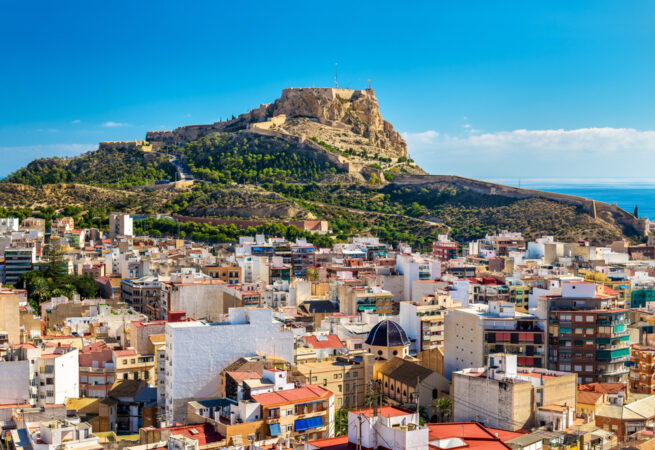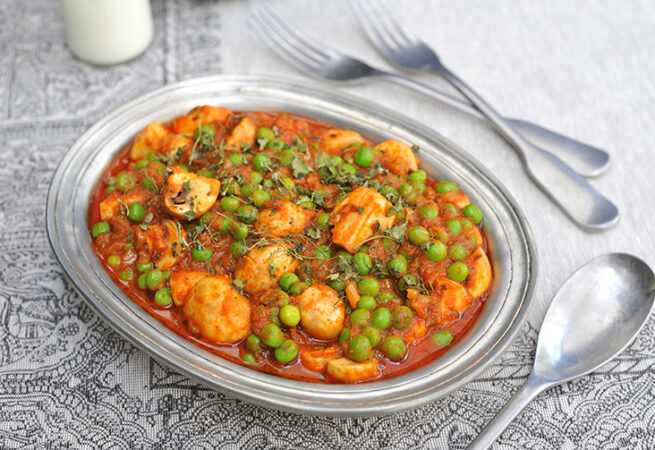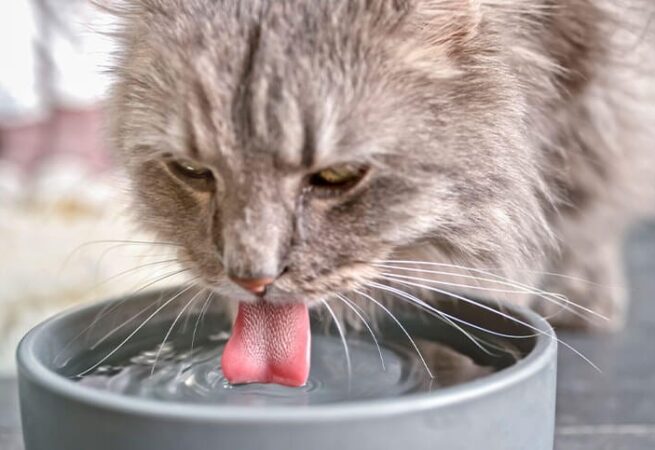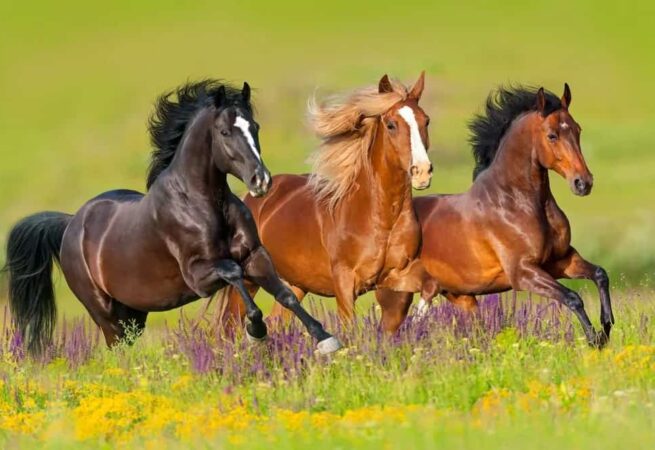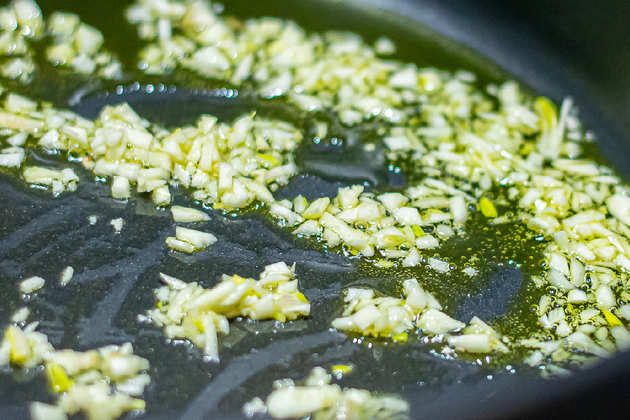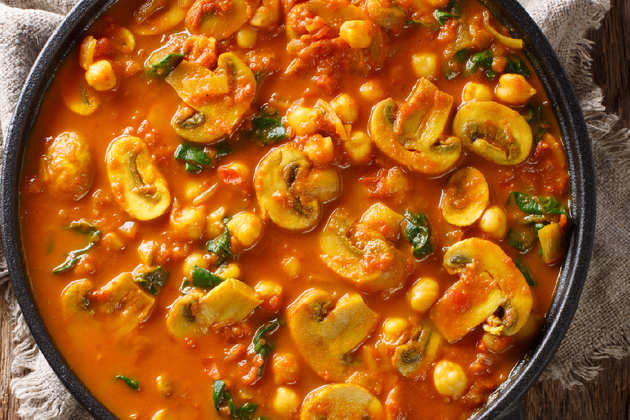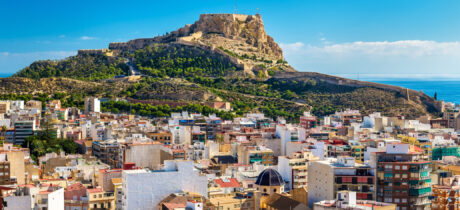
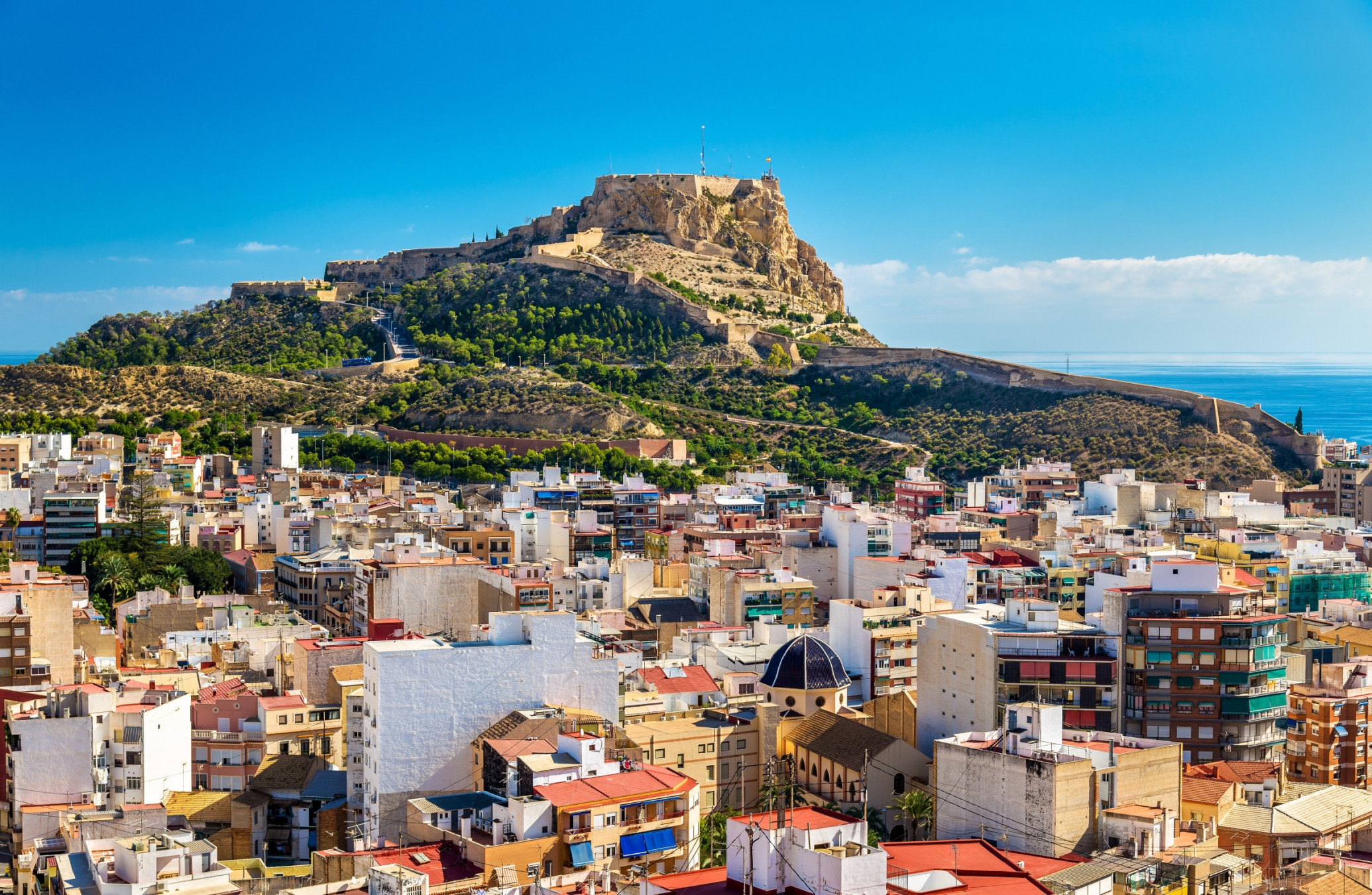
Discover Costa Blanca in Spain
Why Costa Blanca – The White Coast – with its breathtaking beaches is still a hot spot for holidaymakers.
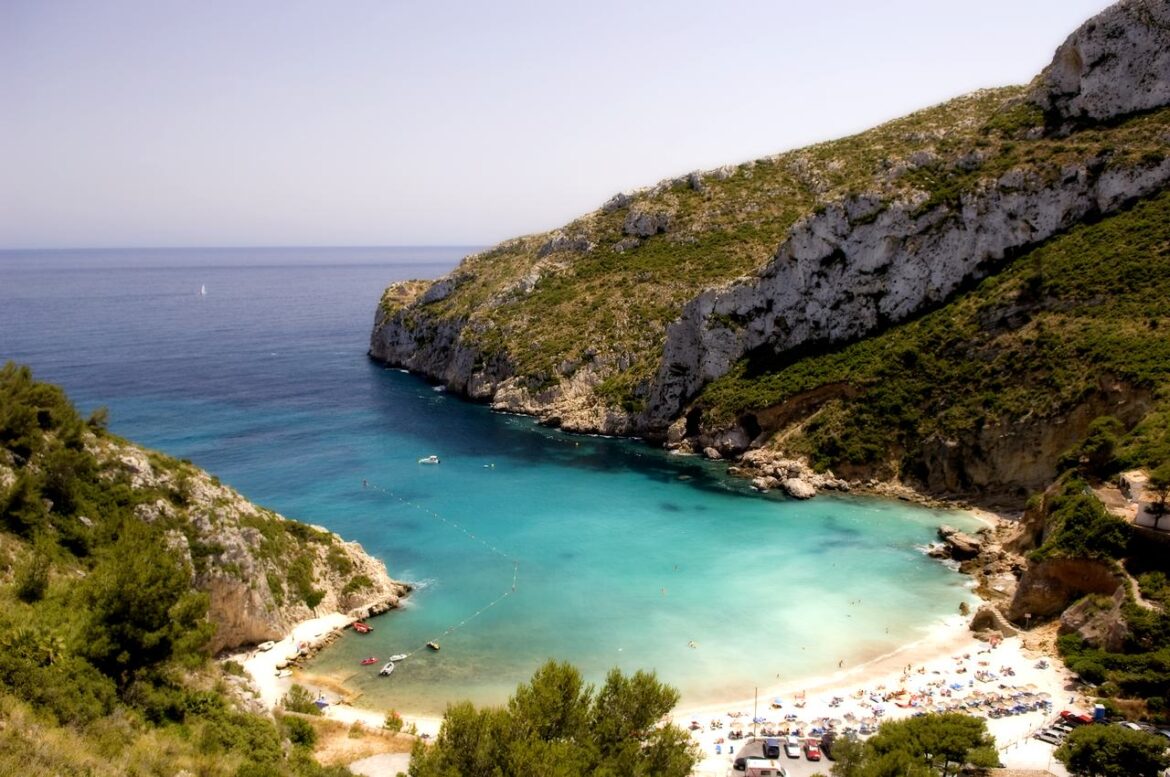
Revered as the ‘White Coast’ for its breathtaking beaches, Costa Blanca stands as one of Spain’s most sought-after destinations.
Encompassing an impressive 124 miles (200 kilometres) of Mediterranean coastline in the Alicante province, on the southeastern coast of Spain and basking in over 300 days of annual sunshine, this picturesque paradise reigns supreme in the realm of vacations.
Prepare to be captivated not only by its sun-drenched shores but also by the myriad of other attractions that await.
Start your journey through Costa Blanca
Are you yearning to embark on an exhilarating adventure? We knew you would be. The time has come to immerse yourself in the enchanting world of Costa Blanca.
ALICANTE Alicante seamlessly marries cultural allure with radiant, golden sunbeams – not to mention its awe-inspiring coastline. A visit to this stylish city is an absolute must. Place Santa Bárbara Castle, serene parks, artisan boutiques, and trendy bars at the forefront of your itinerary for an unforgettable experience.
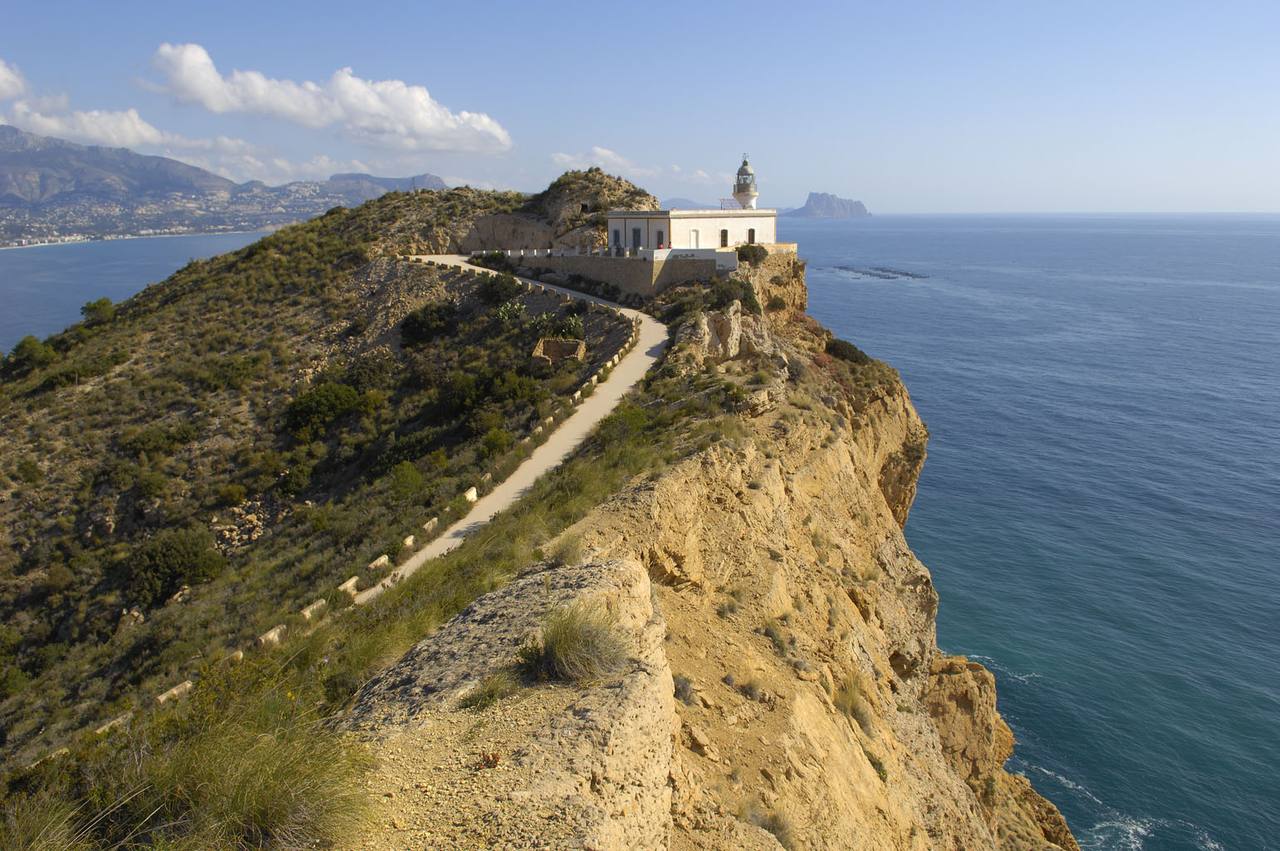
Parque Natural Serra Gelada. Albir
ALBIR Albir, a coastal haven with a distinct edge, beckons sun enthusiasts in search of relaxation in an upscale locale. Drop by for a traditional tapas feast during lunchtime or indulge in a leisurely stroll to El Faro lighthouse, where spectacular views and a refreshing stretch await as your reward.
ALTEA Enchanting Altea, situated north of Alicante, continues to exude the same timeless charm it boasted back in the 1950s when it first introduced itself on the tourist map. Meander through its charming cobbled streets, explore the historic quarter and delightful promenade, and ensure you carve out time to explore the bustling local market and cycling routes.
CALPE For history enthusiasts who prefer a leisurely pace, the former fishing village of Calpe beckons. Boasting an impressive 14 beaches, it seamlessly blends contemporary high-rises with cherished Spanish architecture, all complemented by a natural park, marina, and salt mine.
Unravelling the finest beach escapes
LEVANTE BEACH BENIDORM – Benidorm’s prestigious Levante Beach, awarded the Blue Flag status, offers an array of thrilling water sports, vibrant bars, and delectable restaurants. Take a moment to recline on a sunbed and admire the immaculate sand, which is consistently well-maintained. It’s a haven for beach aficionados!
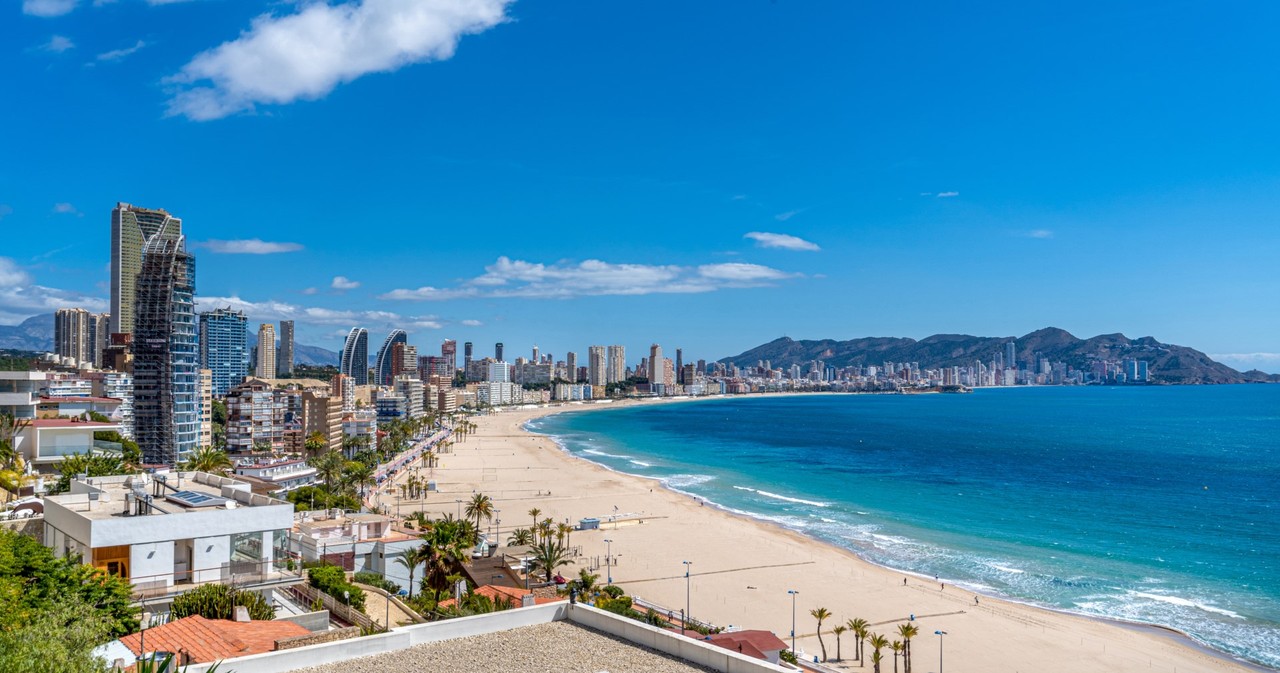
Playa Poniente
PONIENTE BEACH, BENIDORM The gently swaying Blue Flag on Poniente Beach positions it front and centre as one of Benidorm’s top-rated beaches. Relish in over 3 km of pristine, well-preserved sands, complete with sun loungers at your disposal and an array of eateries to ensure you’re nourished and refreshed. Pure bliss.
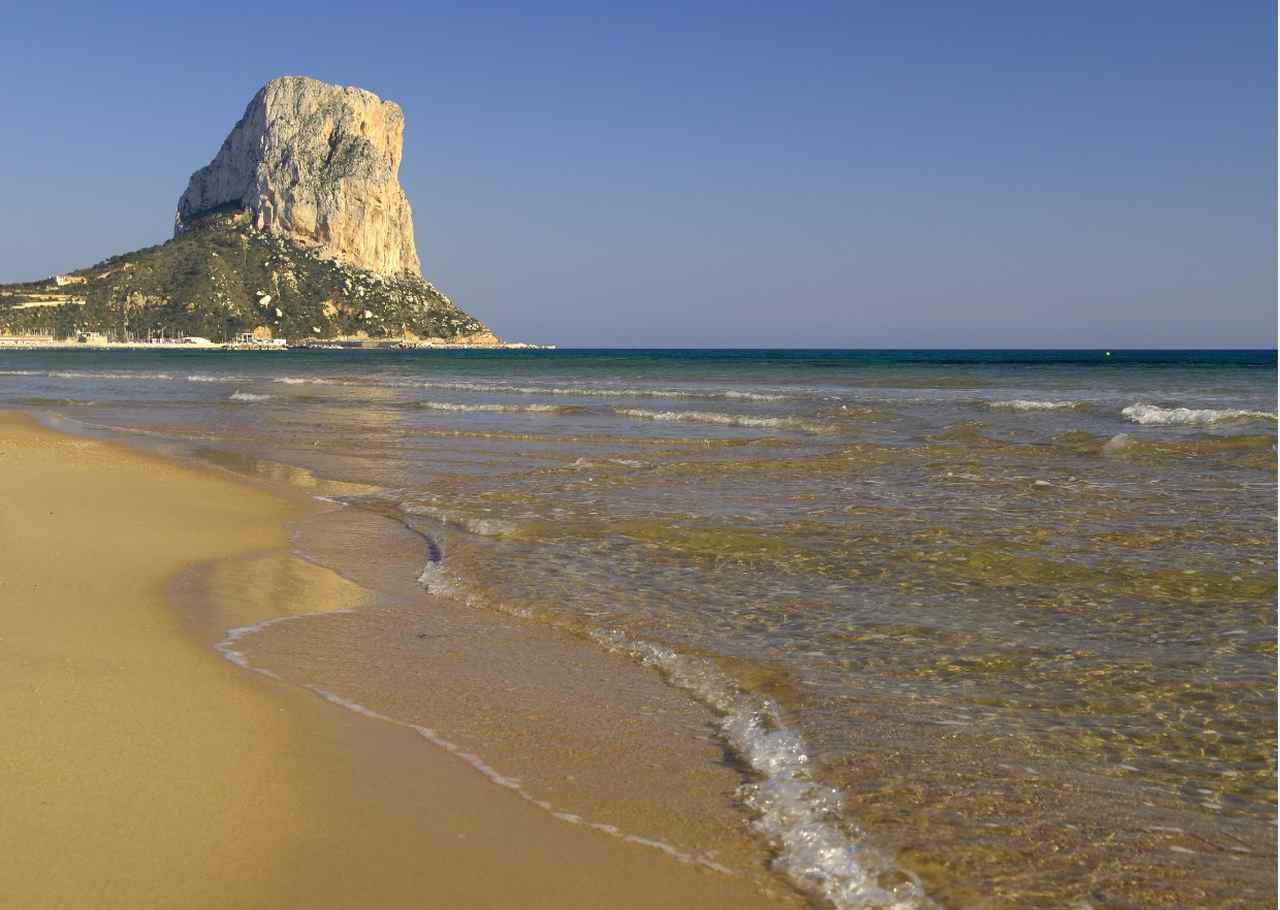
Playa Arenal-Bol, Calpe
PLAYA ARENAL-BOL, CALPE Among Calpe’s impressive selection of 14 beaches, Playa Arenal-Bol stands out as a sunbathing haven. With over a kilometre of sandy expanse, choose your ideal spot to relax and unwind. Numerous bars and restaurants are also conveniently situated nearby.
PLAYA DEL ALBIR, ALBIR If the glistening white sands and crystal-clear waters of this sun-soaked spot weren’t enough to entice you, its coveted Blue Flag status might just do the trick. Nestled between Benidorm and Altea, it offers an idyllic haven for relaxation and soaking up the abundant sunshine.
Must do activities for all ages
FOR ADULTS… Whether you’re an aficionado of water sports or prefer the solid ground beneath your feet, Costa Blanca has an array of options to enchant you.
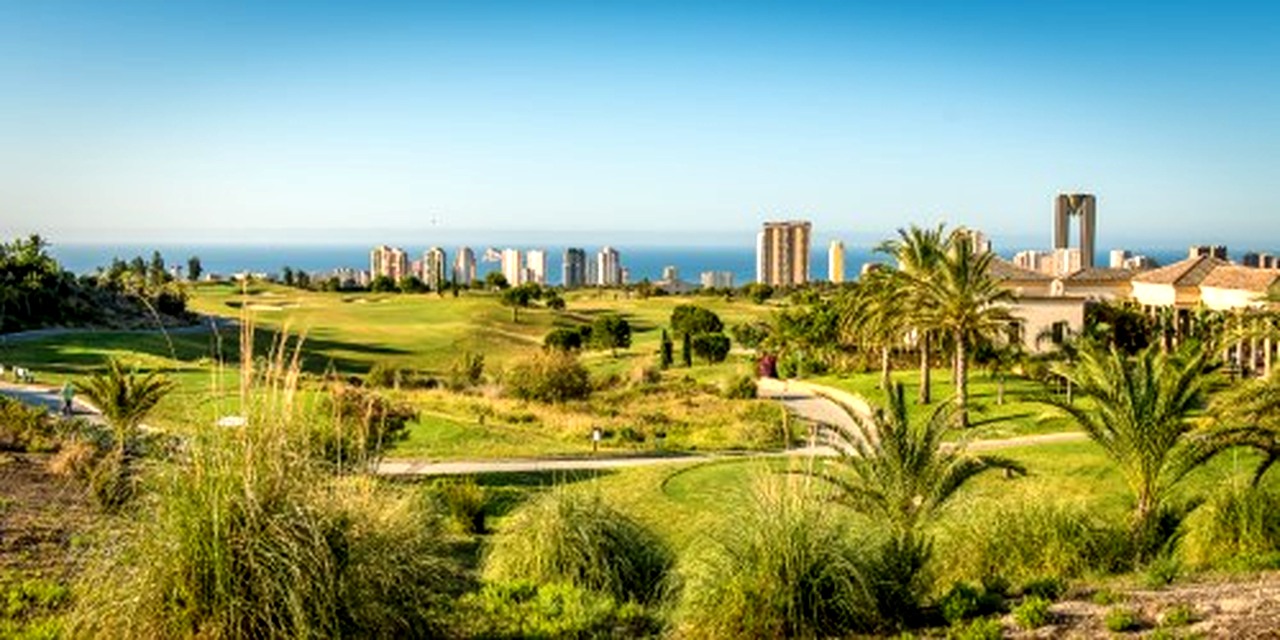
Villaitana golf
Stay active with a round of golf – after all, what’s better than honing your swing while soaking up the sun’s rays? Las Rejas Open Club is a leisurely option for pitch and putt, while the 18-hole Villaitana Golf invites you to master trick shots over bunkers.
From invigorating road biking to picturesque coastal cycling routes, you’ll thrive in the open expanses of Costa Blanca.
Cycling enthusiasts extol the virtues of the region’s loops, so go ahead – give them a whirl. And if history, scenery, or photography tickles your fancy, Parque Natural de Penyal D’Ifach is your haven.
FOR THE FAMILIES… For families, excitement knows no bounds in this region – particularly at Aqua Natura, where thrilling rides and splash-happy slides ensure non-stop fun. Adrenaline junkies with older kids will relish Aqualandia, with its Vertigo and Black Hole attractions. If you’re seeking a tamer experience, the Wave Pool awaits.
Perhaps you’re drawn to hair-raising rides set against the backdrop of ancient Egypt, Rome, and Greece?
Feast your eyes on the exhilarating Terra Mitica. The whole family will be captivated by Mundomar, a park where encounters with birds, reptiles, and even dolphins await. Nature enthusiasts will be astounded by the beauty of the Algar Waterfalls.
When it comes to embracing the wonders of Costa Blanca and its neighbouring attractions, there truly is something for everyone – from sun-soaked relaxation to exhilarating adventures and family-friendly escapades.
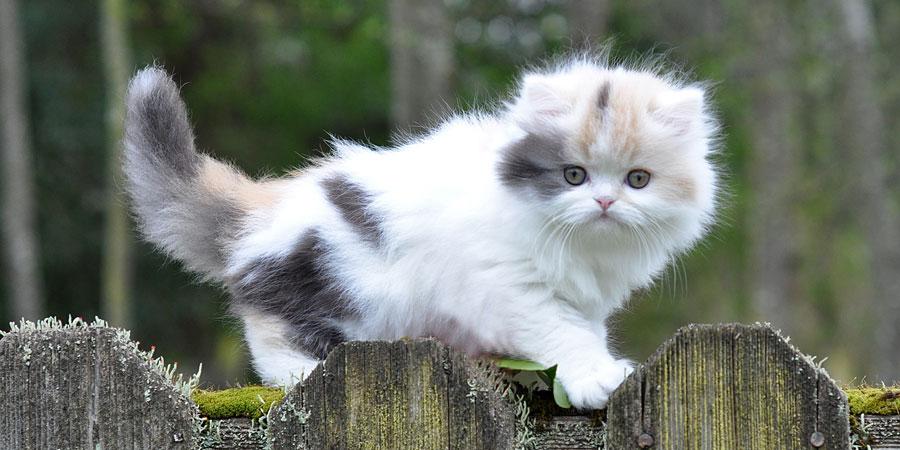
Dwarfism In Cats
Some cats are naturally smaller than others, but unlike this natural variation in size, feline dwarfism is often associated with numerous health issues.
Dwarfism in cats is the result of a genetic disorder, and there are a few cat breeds in which this genetic disorder is selectively bred, such as the Munchkin.
What is dwarfism in cats?
Dwarfism in cats is caused by rare genetic defects which lead to the development of disproportionate and undersized mature adult cats. There are three main types of dwarfism in cats – osteochondrodysplasia, pituitary dwarfism and selective dwarfism.
Osteochondrodysplasia is a developmental abnormality of the bone and cartilage, which results in a lack of normal bone growth. Achondroplasia is one form of osteochondrodysplasia. Affected cats may have a full-size body, but disproportionately short and thick legs and a large head.
Pituitary dwarfism is caused by a deficiency of growth hormones produced by the pituitary gland. Affected cats will be slow to develop and have stunted growth.
Some breeders selectively breed for genetic abnormalities that result in dwarfism, with the Munchkin breed being the result of this selective breeding. This is a controversial topic because these cats are predisposed to a number of health issues.
You may have heard of the terms miniature or teacup cat. These cats are sometimes incorrectly classified as dwarf cats. However, miniatures and teacups, though undersized, are still cats of normal feline proportions.
Signs of dwarfism in cats
Dwarfism in cats results in a number of symptoms, which vary depending on the underlying cause. They may include:
- Larger than normal head
- Undershot jaw with a shorter nose
- Abnormal bone shape
- Poor growth or lack of growth
- Bones appear shorter than normal
- Enlarged joints
- Sideways bowing of forelimbs
- Spinal deviation to either side of the body
Do Munchkin cats have dwarfism?
The Munchkin cat is often cited to be the original dwarf cat breed and is characterised by its very short legs. The Munchkin cat does not have all the traits seen in some cats with dwarfism, so the condition observed in the Munchkin is sometimes referred to as pseudo achondroplasia.
How to diagnose dwarfism in cats
To start the process of diagnosing your cat with dwarfism, you’ll need to provide your veterinarian with a detailed medical history, including when you first noticed symptoms of growth abnormality and any information you have about your cat’s genetic background. Routine checks such as blood tests and urine samples will rule out other causes for the disorder.
X-rays of the affected limbs may be taken, which will show any abnormalities related to bone growth and structure. To confirm the diagnosis, your veterinarian may take samples of tissue to send off for further testing.
How to treat dwarfism in cats
After a diagnosis, your veterinarian may decide to correct some of the impact of feline dwarfism with surgery. However, the results of a corrective surgery do not always result in positive outcomes. Pain relievers and anti-inflammatory medications are recommended for many affected cats as bone deformities can cause pain in movement as well as secondary problems like arthritis. However, some cats with dwarfism go on to live relatively comfortable and healthy lives.
How to care for a cat with dwarfism
Feline dwarfism is a very complex and often poorly understood aspect of feline health and care. The prognosis of this condition depends on the extent of the problem. There is no definitive treatment option available for treating cats with dwarfism, and the outcome varies according to the severity of the disorder and which bones are affected. For some cats, bone dysplasia can be debilitating, whereas, for others, they can learn to compensate for the smaller limb size and reduction in mobility.
One of the possible issues to keep in mind is the increased risk of cat obesity, a common side effect of this disorder. Make sure that your cat sticks to a healthy feline diet and that you are observant of its weight and physical health. As dwarf cats have a high risk of bone and joint issues, it is sometimes advised that they are kept as indoor cats. This gives even more reason to make sure they are on a healthy diet to ensure that they stay slim. Keeping them mentally stimulated is also important to reduce the risk of boredom and behavioural problems.
Due to this being a condition of the bones, the chance of developing cat arthritis is higher as your cat ages. If your veterinarian does recommend pain medications, be sure to follow your veterinarian’s advice and stick to the instructions.
Each cat has their own set of unique traits, which is what makes them endearing and special family members. Dwarf cats and kittens may appear even cuter than most, with their short legs and unique physique. However, cat owners need to be aware of the negative impact selective breeding may have had on the health and mobility of dwarf cats. They must also be prepared for the consequences of these traits and the treatments that come with them.

How Long Do Dogs Really Live
We all love our furry friends but can’t help but wonder how much time we actually have with them.
We’ve put together an article to answer the question ‘how long do dogs live?’ and help you cherish your pooch for years to come. Find out all you need to know below!
How long do dogs live?
On average, dogs live for 10-13 years which is roughly equivalent to 60-74 human years, although there is no hard and fast way of working this out. When thinking about ‘how long do dogs live?’, it’s important to note that elements like lifestyle, food and breed can affect a dog’s life span. Some dogs have even lived into their 20s!
If you’re wondering how long specific breeds live, we have information on that below:

How long do Chihuahuas live?
Chihuahuas reportedly live for, on average, 7.91 years. However, average life spans are only partly useful and the Chihuahua is a good example of this. One study showed that quite a lot of Chihuahuas will die at a young age.
This pulls down the average life expectancy. However, it also means Chihuahuas that have reached six years old will likely live a lot longer than eight.
How long do Pugs live?
Pugs are said to have an average lifespan of 7.65 years. They are brachycephalic, which means that their skull is shorter, and their face is flattened. You’ve probably heard that like many brachycephalic breeds, pugs are, unfortunately, predisposed to many health conditions, which means that their lifespan is shorter than some other breeds.

How long do Shih Tzus live?
Shih Tzus are known for their longevity and live, on average, for 11.05 years. Despite their longer life expectancy, they are more likely to have eye diseases, like dry eye and cataracts.
They can also develop conditions like arthritis and hypothyroidism, which affects organ function and metabolism. This is something to look out for in your Shih Tzu, and call a vet if necessary.
How long do German Shepherds live?
German Shepherds are said to live for an average of 10.16 years. Female German Shepherds reportedly live 1.4 years longer, on average, than males! Unfortunately, large dogs like German Shepherds, are prone to developing dog arthritis which results in decreased mobility. With big dogs, a greater mass means more stress on joints, so be sure to keep your pet at a healthy weight. Bear this in mind with German Shepherds and remember to consult a vet with any concerns.
More average lifespans of dog breeds
- Jack Russell Terrier: 12.72 years
- English Bulldog: 7.39 years
- French Bulldog: 4.53 years
- Yorkshire Terrier: 12.54 years
- Border Collie: 12.10 years
- Springer Spaniel: 11.92 years
- Labrador Retriever: 11.77 years
- Staffordshire Bull Terrier: 11.33 years
- Cocker Spaniel: 11.31 years
- Miniature poodle: 14.2 years

Which dog breed has the longest life expectancy in the UK?
According to the Royal Veterinary College, Jack Russell Terriers have the longest dog life expectancy in the UK.
The same researchers also found that, on average, female dogs live 4 months longer than male dogs.
From the PDSA, vet Claire Roberts has said that the smallest breeds survive the longest (7-14 years) and large dogs the shortest (5-13years).
How to increase your dog’s life expectancy
We’ve answered ‘how long do dogs live?’ but now you’re probably wondering ‘how can I increase my dog’s life expectancy?’ As we mentioned previously, keeping your dog healthy is key to having a robust, and potentially longer, life. This means:
- Regular exercise and mental enrichment
- A good, balanced diet
- Lots (and lots) of love
- Good dental care
- Regular vet visits
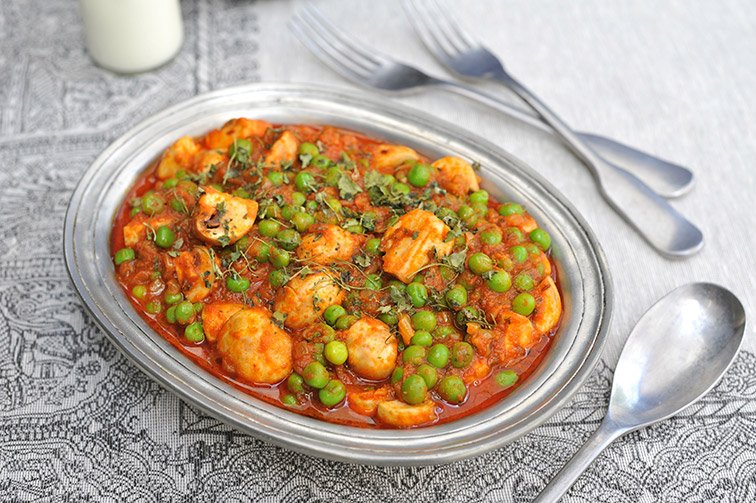
Matar Mushroom Masala Recipe
If you love mushrooms then you must try this recipe. Matar mushroom is the most basic curry that is prepared in Indian Cuisine. If you want to taste the awesomeness of this dish, prepare it at home with white button mushrooms and an amalgamation of spices along with green peas. It is a sufficient lunch and dinner recipe. Matar mushroom masala can be easily prepared for a scrumptious meal. It can also be made for special occasions like birthday, anniversary, game night and kitty party. Make it at home and enjoy it with your friends and family.
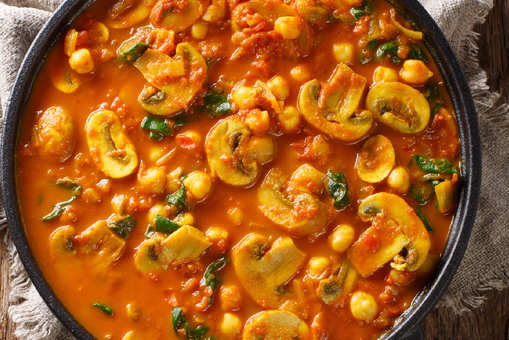
Ingredients of Matar Mushroom Masala
- 200 gm mushroom
- 3 medium tomato
- 1 green chilli
- 1 teaspoon coriander powder
- 2/3 teaspoon garlic paste
- 3 tablespoon refined oil
- 2/3 cup frozen peas
- 1 medium onion
- 1/2 teaspoon red chilli powder
- 2/3 teaspoon ginger paste
- water as required
- salt as required
How to make Matar Mushroom Masala
Step 1 Saute onions and spicesHeat oil in a pan or kadhai and add the finely chopped onions and saute till translucent. Add ginger-garlic paste and saute till the raw smell disappears. Then, add the chopped tomatoes and green chillies. Stir well and add turmeric, red chilli, and coriander powder.Stir well and saute till oil separates from onion-tomato masala mixture.
Step 2 Add mushrooms and peas, and cook well
Add the chopped mushrooms and peas. Stir well and saute for 2 to 3 mins. Then, add water and salt as required. Mushrooms will leave water so add accordingly. In case there is too much water even after the peas or mushrooms are cooked, then reduce the water by simmering the matar mushroom curry without a lid for some more minutes till you get the desired consistency. Cover the pan and cook till the peas are softened. Then, sprinkle garam masala powder. Mix well and serve matar mushroom masala hot with roti or paratha.

Roasted Vegetables Recipe
Yearning for a quick meal, which is not just satiating but has a perfect mix of taste and health, then we have got you covered! This simple yet exotic recipe is perfect for every palate. Perfectly roasted veggies with a mélange of spices and herbs, can not only boost your nutritional quotient, but at the same time take your indulgence to a different level.

Ingredients of Roasted Vegetables
- 2 yellow bell pepper
- 2 zucchini
- 2 medium tomato
- 5 sprigs rosemary leaves
- 1 teaspoon mixed herbs
- 1 teaspoon paprika
- salt as required
- 1 red bell pepper
- 2 capsicum (green pepper)
- 2 potato
- 2 tablespoon extra virgin olive oil
- 1 teaspoon black pepper
- 1 tablespoon lemon juice
- 1 onion
How to make Roasted Vegetables
Step 1 Wash and cut the veggiesWash the veggies, drain the excess water and pat dry them. Next, on a chopping board cut the veggies assemble on a baking tray.
Step 2 Preparing spiced coatingIn the meantime, preheat the oven for sometime. Next, take a bowl and add in olive oil, paprika, salt, mixed herbs, black pepper, lemon juice, whisk it all together and pour over the veggies, coat the veggies nicely in the dressing.
Step 3 Roast the veggies in an ovenPlace the fresh rosemary leaves for more flavour and allow the veggies to bake and roast veggies for 10-15 minutes. Take them out and enjoy!
Tips
Serve hot with mashed potatoes or meat/fish serving and enjoy!

